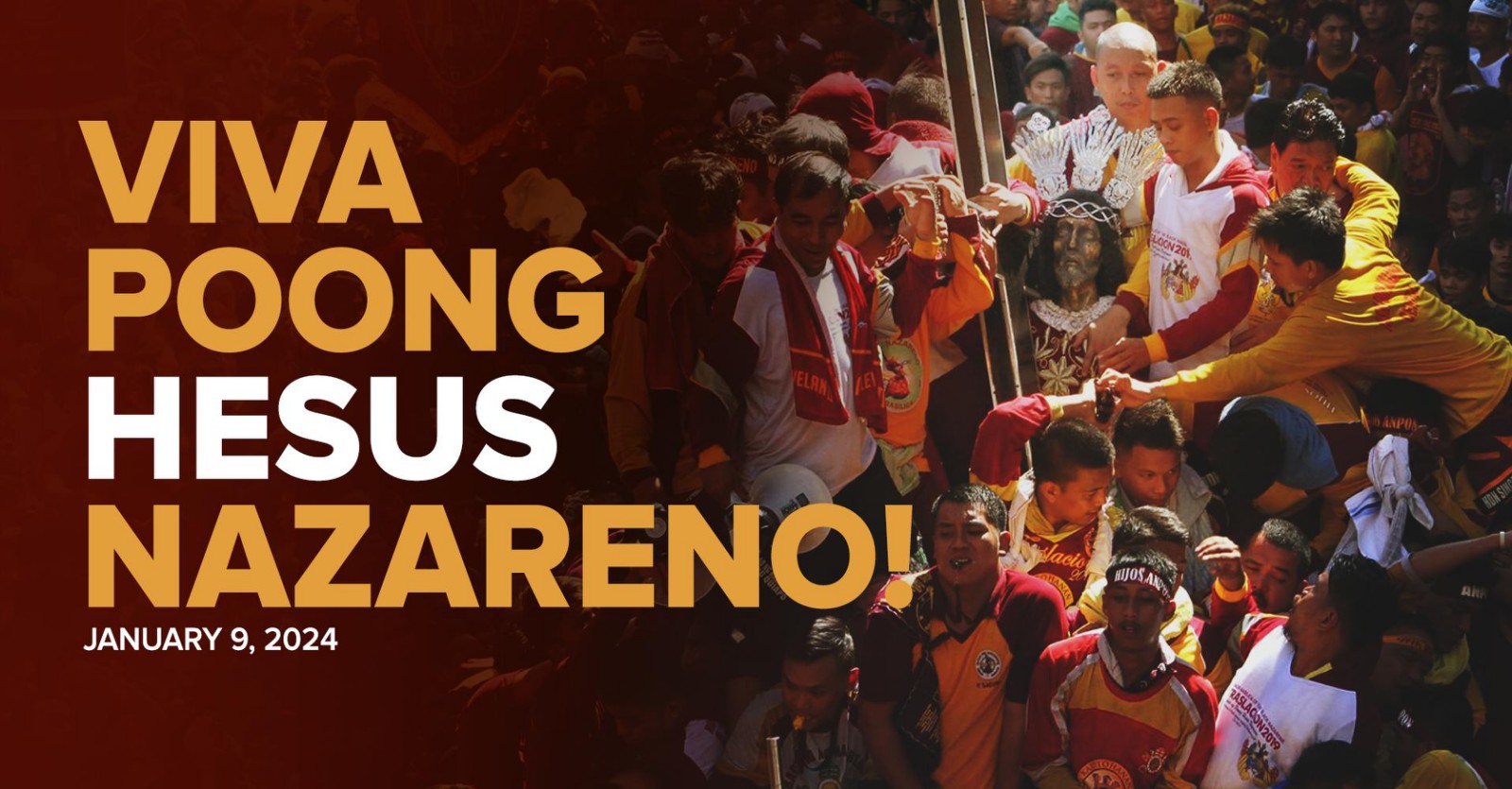
By Brian Jules Campued
The tradition, indeed, lives on.
Every year on January 9th, the holy image of the Nuestro Padre Jesus Nazareno – the dark-colored statue of Jesus Christ, knee bent under the weight of a heavy cross – is transferred from Quirino Grandstand in Luneta Park to the Quiapo Church. The Feast of the Black Nazarene attracts millions of devotees across different walks of life from all over the country.
The traslacion, taken from the Spanish term for passage, commemorates the solemn journey of the Black Nazarene – which is said to be carved in Mexico during the 16th century and brought to the Philippines by a group of Augustinian Recollect missionaries – from its original location at the St. John the Baptist Church in Intramuros to its present shrine at the Minor Basilica and National Shrine of Jesus Nazareno in Quiapo, Manila.
A sea of maroon-clad, mostly barefoot devotees flood the streets of Manila as they jostle with each other just to get close to the Ándas (carriage) which the mamámasán (bearers) carry throughout the processional route.
People vie to touch the statue or have their towels rub the cross with the help of the Hijos del Nazareno (Sons of the Nazarene), dressed in yellow and maroon uniforms and who are the only ones allowed to ride the Ándas during the traslacion.
The people’s devotion emulates the suffering of Christ and as a form of penance, they carry the struggles of daily life in hopes of having their prayers answered. Each of these devotees has their own story to tell and how their faith brought them together in a journey towards spiritual enlightenment.
For Fe Balbuena, a devotee of six years from Bataan, the Black Nazarene helped her bounce back and regain her faith during a dark chapter of her life when she went into jail because of illegal drugs.
“Malaki ang nagawa Niya sa akin, sa buhay ko. Binago Niya talaga ang buhay kasi dati akong bilanggo, drug addict ako, naging pusher pa ako noon. Nang makilala ko Siya, lahat-lahat binago Niya sa buhay ko.”
Her devotion became stronger and deeper when the Nazareno “miraculously” healed her crippled grandchild – another reason she now serves as one of the Hijas at the Minor Basilica.
Many people pray for good health and healing from severe illnesses like Mark Demver Atienza and Nahtalie Devera who both recovered from sickness that once threatened their lives.
Atienza developed a kidney disease at a young age of 14 but it didn’t make him lose hope. He kneeled to the Black Nazarene and asked for healing – of which, the Nazareno granted and this blessing in his life forged his faith.
“After no’n, nagkaroon ng grupo sa Silang, Cavite ng Mahal na Poong Hesus Nazareno. Tapos doon na nag-start, nagtuloy-tuloy na siya until now,” told Atienza.
Even for a member of the younger generation like Devera, her wish is the same with most people – to not experience again what happened to her five years ago when she was stricken by a life-threatening disease.
“Simula po noong nagkasakit ako dati and tuloy-tuloy na po ‘yon every year na. Good health po, sana po hindi na maulit ‘yung dati,” said Devera.
Oliver Tungcab, on the other hand, prayed for him and his wife to successfully have a child. For nine years, their attempts to conceive failed three times – not until they went to the Black Nazarene and held on to their faith to Him.
“Noong nanampalataya po kami kay Poong Nazareno, ito po nagbunga po ang isang lalaki at nasundan ng babae. Kaya taon-taon po ay pumupunta po kami,” Tungcab, who now visits the Poong Nazareno with his family every year, narrated.
Amid the countless prayers for healing, forgiveness, and guidance, the devotees never forget to say their gratitude for the blessings they have received no matter how big or small it seemed. And one such person is Vilma Beca.
“Sobrang pasasalamat dahil lahat ng hiniling, ay binigay Niya. Habang ako’y nabubuhay, nasa Kanya ako,” a tearful Beca said.
The Feast teaches us about faith and sacrifice – how it can bring people together and overcome any hardship. As the people sing their praises and yell “Viva Nazareno!”, the hearts of many are filled with spiritual euphoria and are brimmed with hope that their lives will continuously be blessed by the Mahal na Poong Nazareno.
Shortly before sunrise of the next day, the Ándas will arrive at the Church where it’ll be moved to safety in the Adoration Chapel. The ardent devotion of the bearers, the Hijos and Hijas, the priests, and the so-called devotees safely carried the Black Nazarene back to its home. – cf
